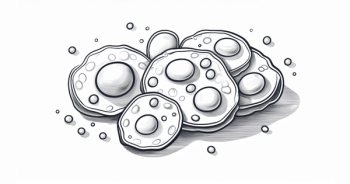
Targeted Therapies in Oncology
- April I 2025
- Volume 14
- Issue 5
- Pages: 43
Early Data of LEU011 Show Encouraging Potential in Solid Tumors
The AERIAL trial will assess LEU011, which has MHRA Innovation Passport status, for solid tumors, a challenging area compared with hematologic cancers.
The use of chimeric antigen receptor (CAR) T-cell therapies in the treatment of solid tumors has been met with challenges compared with the treatment of hematologic malignancies, but ongoing research continues to explore their use in this setting.
In a presentation titled, “Treatment of Solid Tumors With NKG2D-Based CAR T-Cells,” John Maher, PhD, presented the rationale for the AERIAL trial (NCT06193902), which was designed to evaluate the efficacy of a natural killer group 2D (NKG2D)–targeting CAR T-cell therapy (LEU011) in treating patients with solid tumors, during the European Hematology Association/EBMT 7th European CAR T-cell Meeting from February 6 to 8, 2025, in Strasbourg, France.1 The agent was granted an Innovation Passport for the treatment of solid tumors expressing NKG2D ligands. The Innovation Passport is a designation granted from the Medicines and Healthcare Products Regulatory Agency (MHRA) Innovative Licensing and Access Pathway.2 MHRA is a regulatory agency in the United Kingdom’s Department of Health and Social Care.
The AERIAL trial will evaluate the safety and clinical activity of LEU011 in patients with relapsed or refractory solid tumors following preconditioning chemotherapy. The phase 1/2 trial consists of an open-label, single-ascending dose design, which will identify the maximum tolerated dose for LEU011. Following the dose-escalation portion of the trial, LEU011 will be further evaluated in a dose-expansion open-label segment with enrollment of patients with solid tumors expressing 1 or more NKG2D ligands.
Describing the schema for the AERIAL trial, Maher, clinical senior lecturer in immunology, King’s College London, United Kingdom, said, “Dosing starts at 108 CAR T cells in a single cohort…. If no signal is detected, we’ll move to a second single-patient cohort featuring 3 × 108 cells, and then the third cohort of 3 patients will revert to a 3 + 3 design with 1 billion CAR T cells. Cohort 4 will feature 3 patients and 2 billion CAR T cells.” Subsequently, dosing will continue to the dose-expansion phase. “We have no idea where we will find the sweet spot, so only time will tell,” Maher said.
NKG2D is a receptor that is widely expressed by immune cells, NK cells, and T-cell subsets. The receptor recognizes 8 different ligands, and these ligands are overexpressed on a number of tumor types.3 Maher provided a brief history of the development of NKG2D. The first CAR developed using the NKG2D backbone was fused with CD3ζ, a T-cell surface glycoprotein. “A second-generation CAR added the endogenous DAP10 in the T cell to deliver a costimulatory signal. Efforts to commercialize this product had a lukewarm response, with minimal safety signals,” Maher said.
“We thought about this challenge and decided to go back to nature, because my feeling has always been that nature is smarter than we are at designing receptors. We used the natural NKG2D receptor itself and overexpressed it together with its natural partner, DAP10,” Maher said. “We also introduced a little wrinkle into this structure with the addition of the endodomain of DAP12.”
A number of characteristics are appealing about NKG2D as a CAR-targeting moiety as demonstrated in findings from preclinical studies. Maher emphasized that the ligands are not only expressed on malignant cells in the solid tumor microenvironment. He further noted that LEU002 targets mesenchymal stromal cells and tumor/stromal spheroids, it has the ability to form organized immune synapses, and the CAR cells are metabolically fit and lack senescent cells.
“Testing the agent in mice with an intraperitoneal ovarian tumor xenograft showed that the infused CAR T cells will locate the tumor and reach the core of the tumor itself,” Maher said. Further, in a slide demonstrating a subcutaneous pancreatic xenograft, CAR T cells were evenly distributed across the core of the tumor. “These data provided us encouragement that this [CAR] could be an encouraging clinical candidate to further develop,” Maher concluded.







































